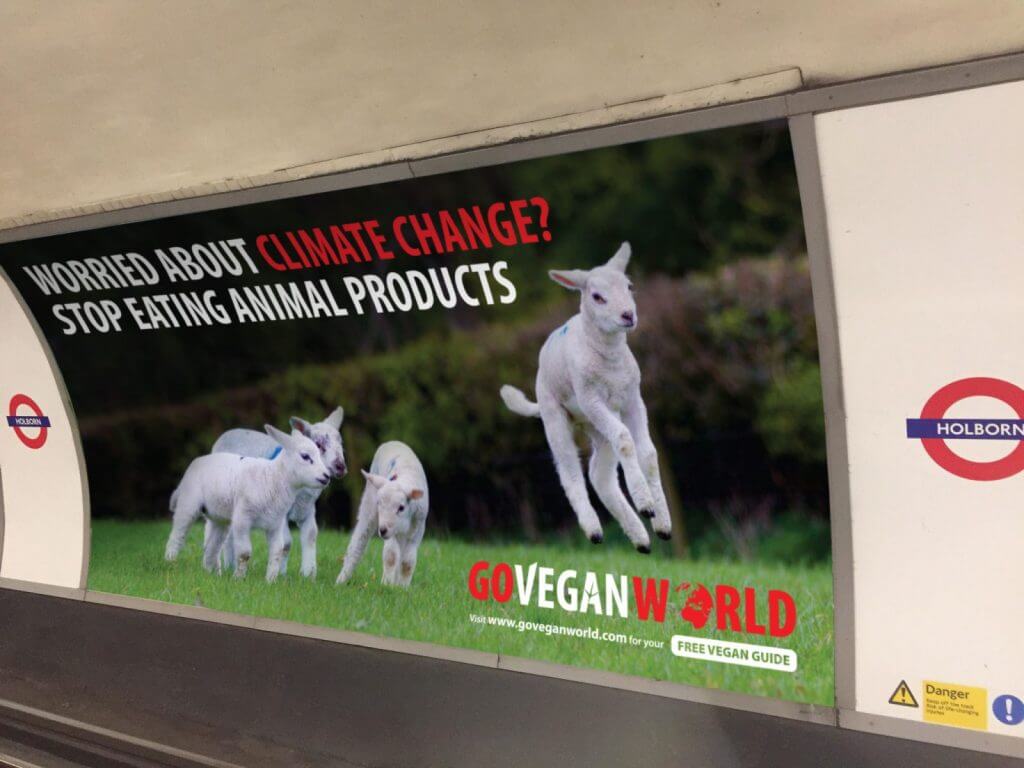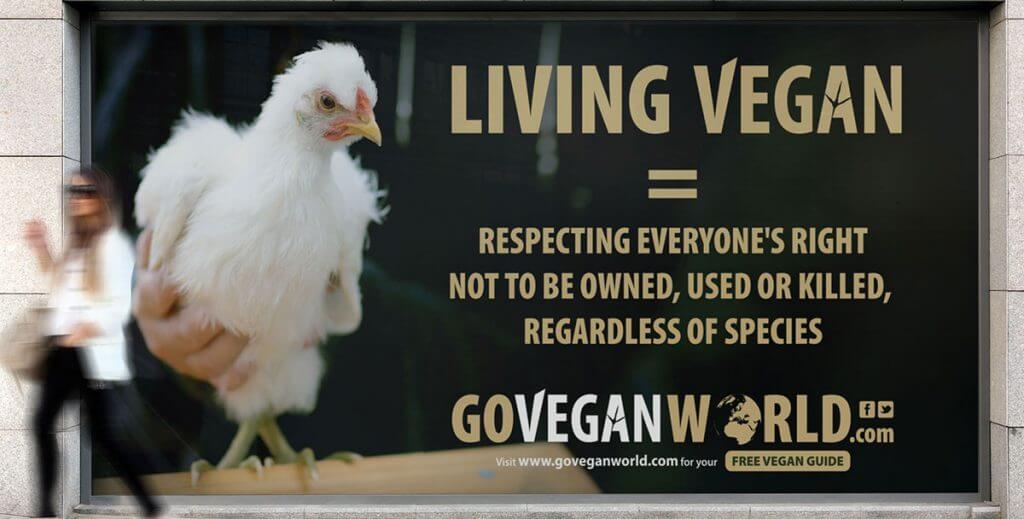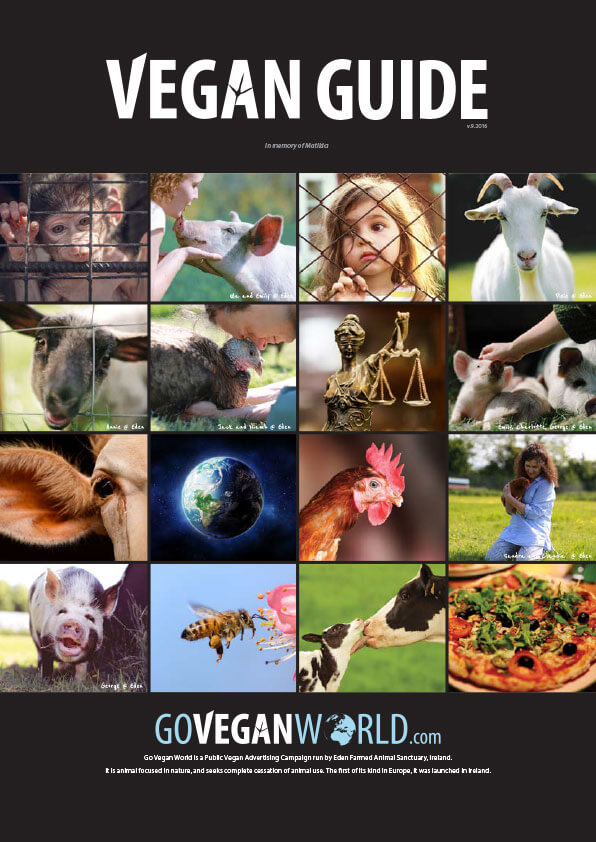
Destroying Our Shared Environment

The world’s human population of 7.7 billion represents only 0.01% of all living things including animal and plant life. Yet, despite this tiny number, humans have impacted the world in such a dramatic and destructive way that a new era has been suggested. Referred to as The Anthropocene, this era is defined by human caused catastrophic destruction of the delicate balance of nature upon which all of life depends for its existence.
A World on the Precipice of Disaster
We have entered the Sixth Mass Extinction of life on earth, causing a biological annihilation of wildlife. Climate catastrophe is imminent. Every day another news item reminds us that the earth we took for granted, believing that it could sustain life indefinitely, is crumbling because of human activity. The media that for so long ignored the major causes of environmental destruction and climate change, is suddenly revealing the horrifying effects of Western World living and calling for a change in our behaviour, including food production and dietary change. Children all over the Western World have begun to strike from school attendance in an effort to shock the adult world out of complacency and take action before it is too late.
How has this happened?
In a relatively short period of time, since we domesticated other animals around 12,000 years ago, and especially since the Industrial Revolution of the 18th and 19th centuries, humans have rapidly occupied an increasing amount of the planet’s surface. In doing so, we have displaced other species and destroyed their ecosystems. We have rampantly exploited the earth’s finite resources of land, water and clean air, without regard for the needs of others and without concern for the future. Overconsumption and unhindered capitalism with its focus on individual gain and the accumulation of wealth, have fuelled this destruction with the human demand for animal products being one of the most significant drivers of destruction.
That this individualistic exploitation of earth’s resources and of other living beings could only end in catastrophe was clear to some many years ago, but it is only very recently that international organisations such as the United Nations Food and Agriculture Organisation have acknowledged that we are systematically destroying the environment upon which we all depend and if we do not take bold, unified action to reverse what we have done, catastrophe is imminent.
Can we avert disaster?
Despite the dire warnings, when each of us looks around us, life appears to go on much as usual. Unless there is a natural disaster that is attributed to climate change or a drastic shortage and/or severe price increase in the products and practices that we engage in every day, most of us don’t experience the effects of these problems. Therefore, we ignore them and keep supporting the very industries and lifestyles that are responsible for them. The problem is exacerbated because the people in those countries that contribute the most to environmental destruction and climate change, are impacted least by their effects.
Farmers in the Western World who have experienced the effects of climate extremes at first hand, have been on the verge of closing down several times in the last few years due to lack of animal food and water. Yet when conditions recover sufficiently, they go back to business as usual, without any consideration of the bigger picture. Those with a vested interest in the major causes of climate change and environment destruction continue to deny their contribution to the problem and defend their continuation. The rest of us continue as normal, creating a demand for the very products that are proving so disastrous. Although the issues are being discussed in the media and at government level, remediation is paltry and insufficient.
The Vegan Solution
One of the critical changes we must make as a species if we are to have any hope of addressing our destruction of this planet, is to stop using and killing other animals. In terms of greenhouse gases and climate change, the misuse of our limited land and water, destruction of biospheres and ecosystems, human-caused species extinction and waste, animal use is such a key contributor that it is becoming clear that we cannot prevent the irreversible destruction of the planet unless we stop using and killing animals and shift to a plant based food system, globally.
As individuals we can take action and it is vital that change occurs at an individual level as well as at a policy level in the countries that are contributing most to the problems. So what changes can you make? As we explain in the following sections, going vegan, including changing our diet from one that includes animal products to a fully plant based diet, is the easiest, most effective way, that individuals can take immediate action to avert environmental disaster and catastrophic climate change.
As well as individual change from consumers, we need top down change. That involves subsidizing plant foods to make them more affordable for consumers as well as subsidising farmers to engage in alternatives to animal agriculture. We have the technology to produce tasty, healthy, sustainable, cheap food. Seitan, the very popular animal flesh alternative made from wheat gluten is made using a receipt that is 2000 years old. The technology that currently produces insulin and rennet (precision fermentation) is an even more promising method of food production that could adequately feed the growing population without using other animals, and create conditions in which we could restore the health of the planet.
The Animal Agricultural Problem
The most comprehensive analysis to date of the damage farming does to the planet found that going vegan is the single biggest way to reduce your impact on the planet.
Joseph Poore, University of Oxford
Source: Reducing food’s environmental impacts through producers and consumers, Science 01 Jun 2018.
Most people are still not aware of the link between climate change, environmental destruction and diet. While most individual attempts to reduce our environmental footprint target the amount of water we use for washing or watering the garden, and our transport needs, of far greater significance is how we eat.
Why is Animal Agriculture so harmful?
When people talk about food waste they are usually referring to the Western World practice of growing, purchasing and then throwing away food that is not eaten. However, the greatest waste of all takes place in animal agriculture because of over-production of animal products that are subsidised even when they are disposed of, and because of the amount of resources it takes to produce animal foods versus plant foods.
Farming animals so that they can be exploited and killed for food happens on an enormous scale. It uses more of the earth’s land than any other human use. It also monopolises the earth’s resources of fossil fuel and water, causes land, air and water pollution, and contributes significantly to global warming.
Given the scale of animal agriculture and the resources that are poured into it, it is not only an unjust use of the lives and bodies of sentient animals, it is also a highly inefficient and unsustainable method of food production. Despite the enormous environmental impact of animal agriculture, it produces only 37% of our protein and 18% of our calorie requirements.
We are finally seeing recognition of the contribution of animal agriculture to planetary destruction by groups of experts funded by non-profits and by United Nations bodies. In recent years a series of reports have been issued, each confirming in turn that we must stop using animals for food if we are to have any hope of avoiding environmental catastrophe. Notably, the Anthropocene is characterised by our exploitation of the world’s most eaten land animal: the 60 billion individual chickens killed worldwide annually for food showing how overconsumption and injustice are at the root of our current problems.
Many reports linking animal agriculture to environmental destruction and climate change ignore the contribution of fishing. Trillions of fishes are killed every year for animal feed and human consumption, and many other sea animals are injured and killed in the process. Fishing relies on fossil fuels, consuming 40 billion litres of fuel in 2011 and generating a total of 179 million tonnes of CO2-equivalent GHGs (4% of global food production) (Parker et al, 2018). Fishing and pollution threaten sea life and alter marine biodiversity. We need resilient and healthy marine ecosystems to absorb our carbon dioxide emissions.
Of course, in many of the more exploited countries of the world the majority of humans already eat an exclusively or predominantly plant-based diet and always have done. It is for the most part the so called Western nations where most animals and animal products are consumed, and so it is these countries that must lead this change of focus to a plant-based food system, and stop their exploitative, capitalist efforts to encourage people in countries where consumption of animal products has been low to consume more in the interests of profit.
Animal Agriculture is Unsustainable
Every year we kill trillions of animals to feed the human population of 7.6 billion. A significant percentage (about 10%) of the global population is malnourished or hungry meaning that they suffer chronic food shortage, a lack of food, and/or lack the necessary calories and protein for key bodily functioning (in other words this is a lethal form of malnutrition). Let’s have a look at the numbers of individuals who are bred into existence and killed every year for approximately 6 billion of us:
Numbers of individual animals killed every year to feed approximately 6 billion humans
| Species: | No. of individuals killed: |
|---|---|
| Land mammals: more than: | 92.2 billion |
| of whom chickens account for: | 73 billion |
| Male chicks killed in the egg industry: | 7 billion |
| Farmed fish: | 160 billion |
| Wild/sea caught fishes up to: | 2.7 trillion |
Using animals as food consumes significantly more resources than a comparable plant diet. When we eat a plant or vegan diet, we consume plants directly. When we eat animal foods (flesh, fish, dairy and eggs), we consume plants indirectly. Vast amounts of resources in terms of land, water, fertiliser and fossil fuels are required to grow plants that are then fed to animals. While they are alive, the animals take up space on the land for grazing and living, and they consume vast amounts of water. A lot of the resources they consume are used for their basic bodily functions. Therefore when they are used as food, the yield in terms of calories, protein and nutrients is extremely low in comparison to the input required to produce them.
Animal Agriculture uses 83% of the world’s agricultural land, but delivers only 18% of our calories (Poore et al, Science, 2018). Using cows for their flesh (“beef”) uses 60% of the world’s agricultural land but accounts for less than 2% of the calories and 5% of the protein consumed worldwide. (Source: Union of Concerned Scientists). As the following comparison between dairy and plant milks shows, animal foods are significantly more resource intensive than plant food equivalents.

- In 2010 Agriculture and food consumption are identified as one of the most important drivers of environmental pressures, especially habitat change, climate change, water use and toxic emissions. (Source: Assessing the environmental impacts of consumption and production, UNEP (2010).
- In 2016, the Oxford Martin Institute compared the impact of standard and plant-based diets. The report showed that the less animal products we consume the better. If a 100% plant diet were adopted by the year 2050, it could save 8 million human lives, reduce greenhouse gas emissions by two thirds, and lead to healthcare-related savings and avoided climate damages of $1.5 trillion (US). (Source: Analysis and valuation of the health and climate change cobenefits of dietary change, PNAS, 2016).
- In June 2018, another report analysed the environmental impacts of 38,000 farms producing 40 different agricultural products around the world. It concluded that animal agriculture contributes significantly more GHG emissions than transport and recommended transferring subsidies to plant agriculture and taxing meat and dairy production.
Further information is available on the following pages:
Lead author Joseph Poore is quoted as stating:
“A vegan diet is probably the single biggest way to reduce your impact on planet Earth, not just greenhouse gases, but global acidification, eutrophication, land use and water use.
“It is far bigger than cutting down on your flights or buying an electric car,” he explained, which would only reduce greenhouse gas emissions.
“Avoiding consumption of animal products delivers far better environmental benefits than trying to purchase sustainable meat and dairy,”
“impacts of the lowest-impact animal products typically exceed those of vegetable substitutes, providing new evidence for the importance of dietary change.”
Source: Reducing food’s environmental impacts through producers and consumers, Science, 2018). See also Reducing the Environmental Impact from Food: A Webinar with Joseph Poore | Plant Based Treaty.
- In October 2018 the Intergovernmental Panel on Climate Change advised that we have only just over a decade to make the necessary changes if we’re to have any hope of avoiding devastation. (Source: IPCC Special Report Global Warming of 1.5°C).
- In January 2019 the EAT-Lancet Commission on Food, Planet, Health report Food in the Anthropocene: confirmed that for the sake of human health and to avoid the destruction of the environment upon which we all (human and non-human) depend, we must shift to plant-based production and consumption. Source: Summary. Full report of Food in the Anthropocene: the EAT-Lancet Commission on Healthy Diets from Sustainable Food Systems.
- Later in that same month of January 2019 the EAT–Lancet Commission published a second report on the work of 30 world-leading scientists from across the globe, who reviewed extensive data and scientific studies in order to reach a consensus on what constitutes a healthy and sustainable diet. The report concluded that a diet that takes account of human health and climate change is based on plants.
- In 2023, a peer reviewed study led by Peter Scarborough at Oxford university, analysed the diets of 55000 vegans, vegetarians, fish-eaters, and flesh-eaters in the United Kingdom. It used data from 38,000 farms in 119 countries. The results showed that, in comparison to diets containing greater than 100g animal flesh per day, vegan diets (i.e. plant diets containing no animal products) cut methane emissions by 93.5% (confidence intervals 90.3% – 96.3%, Supplementary table 8). The paper also showed that vegan diets resulted in 75% less climate-heating emissions, water pollution and land use than diets in which more than 100g of flesh a day was consumed. Vegan diets also cut the destruction of wildlife by 66% and water use by 54% (Scarborough, P., Clark, M., Cobiac, L. et al. Vegans, vegetarians, fish-eaters and meat-eaters in the UK show discrepant environmental impacts. Nat Food (2023). https://doi.org/10.1038/s43016-023-00795-w). See also report on this paper in The Guardian.
Many people think that a useful approach to climate change is to ‘eat less meat’ or give up eating the flesh of cows. Whenever there is a furore in the media about cow flesh (beef), whether it pertains to harm to the environment, or risks to human health of consuming animal flesh, people tend to replace ‘beef’ with chickens and fishes. Chickens and fishes have smaller bodies. Significantly more of them are harmed for food than other animals. The vast majority of the billions of land animals who are bred and killed for food every year are chickens, and trillions of fishes are also killed unnecessarily as food. It is just as easy to go vegan and eat a plant diet than it is to reduce or give up animal flesh.

Resources
The best film resource to date on the link between animal agriculture and destruction of the natural environment is Cowspiracy, released in 2015. There is an accompanying book The Sustainability Secret. Cowspiracy is available to download or to watch on Netflix. The film Seaspiracy is a very useful examination of the fishing industry.
- Plant Based Treaty
- Oxford Martin School, University of Oxford
- George Monbiot
- A Well Fed World
- Plant Based Solutions to Global Hunger & Climate Change
- Truth or Drought
- An Taisce (contains interesting reports on Ireland)
- Think or Swim: John Gibbons
- Check out our section on veganic farming and alternatives to animal agriculture with links to other excellent sites such as The Vegan Society’s Grow Green reports and Veganic Food Production.
- Precision Fermentation
- Why Are We Subsidizing a Broken Food System
- 93.5% Less Methane on a Vegan Diet
References
[1] ICCP report October 2018 https://www.ipcc.ch/sr15/
[2] United Nations Food and Agriculture Organization report Tackling Climate Change Through Livestock: www.fao.org/3/a-i3437e.pdf It is notable that in 2006 the same organisation had reported that animal agriculture accounted for 18% of all GHG. Between 2006 and 2013 they changed their approach to assessment of the percentage. For one analysis of this change in their position see: https://www.youtube.com/watch?v=KpmTiHjUEBU at 3:30 minutes, supported by this Op Ed piece by Robert Goodland who was an environmental advisor at the World Bank: https://bittman.blogs.nytimes.com/2012/07/11/fao-yields-to-meat-industry-pressure-on-climate-change/
[3] Goodland & Anhang, World Watch: Livestock and Climate Change, 2009: http://templatelab.com/livestock-and-climate-change/
[4] https://bittman.blogs.nytimes.com/2012/07/11/fao-yields-to-meat-industry-pressure-on-climate-change/


